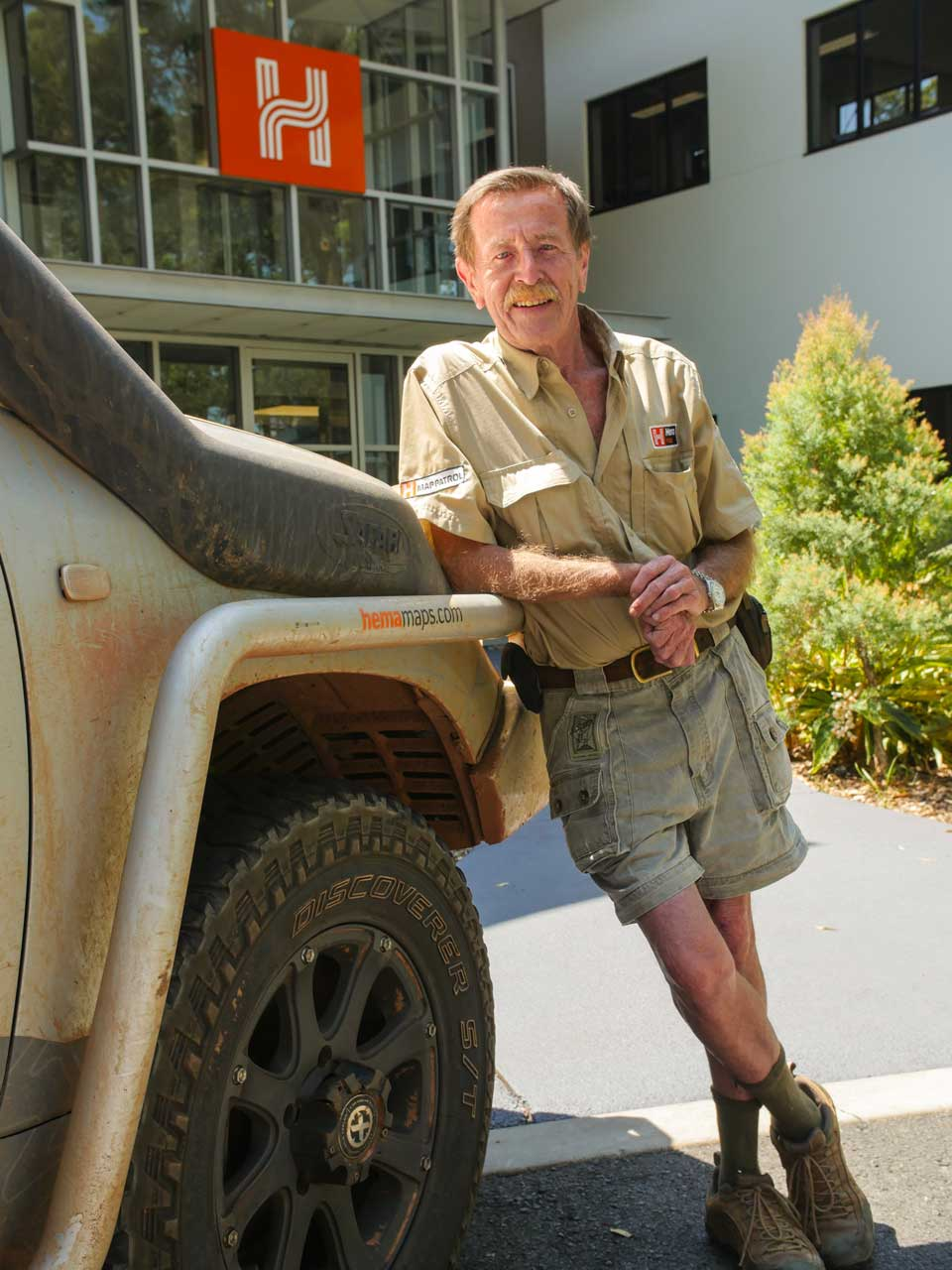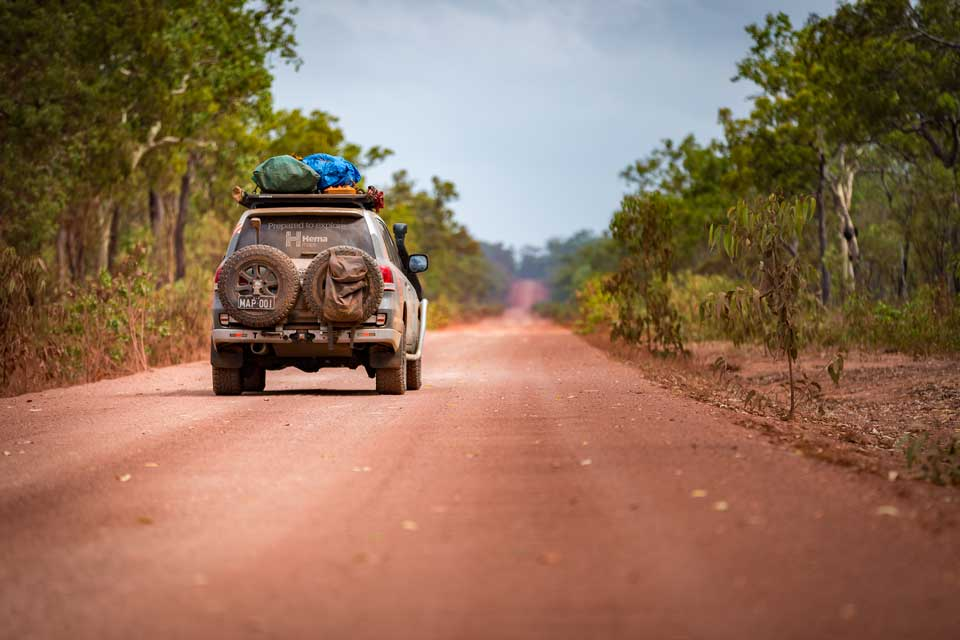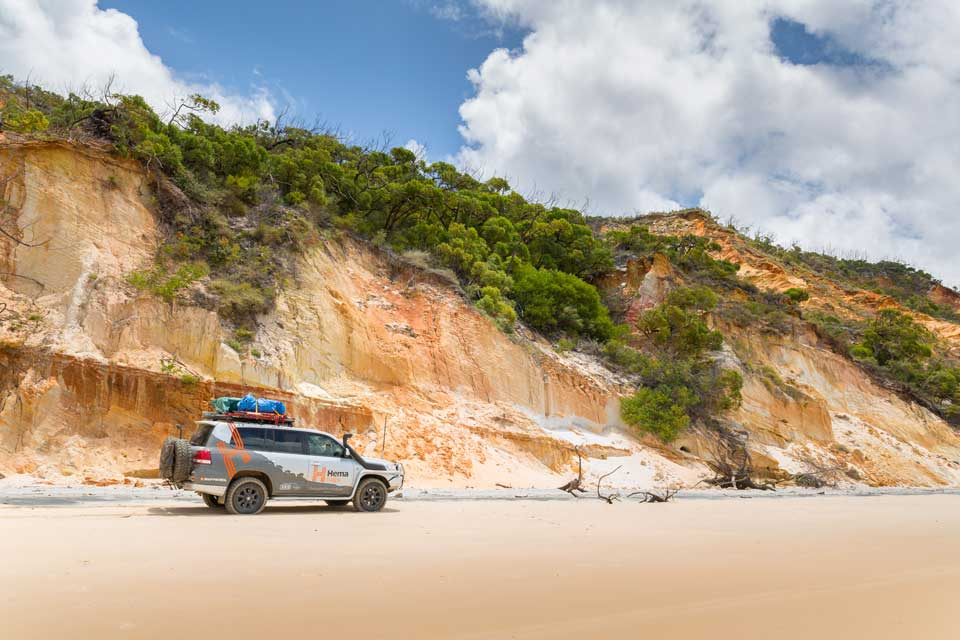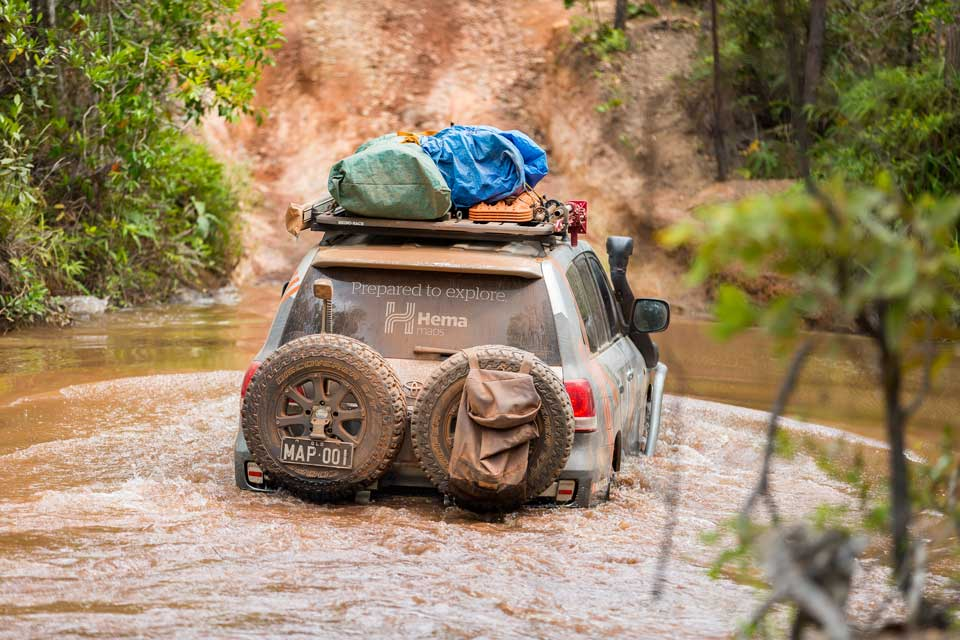Ian Glover in Cape York
Words by Ian Glover and images by Matt Williams
When I told mates that I was going to Cape York for six weeks doing mapping for Hema and researching the 2016 edition of the atlas and guide for the region, reactions were fairly predictable; descriptors of me were highly insulting and one of them would have had my mother indignantly flourishing her marriage certificate. After the usual profanities, one did however tell me that I'd find the Cape had changed.
Previously, I'd been to Cape York three times; the last time about ten years ago, but that didn't really count, as I'd stepped onto The Tip from a Zodiac inflatable. The two real trips were in the early 1980s. At the tail end of this year's Dry Season, visitor numbers were about the same as they were in the peak all those years ago, when visiting the Cape required about as much planning and prep as a modern day expedition to the bottom of the Marianas Trench. Fuel's easier to get now - and relatively cheap - the highest price we saw was $2.40 a litre at the Jardine Ferry, but a couple were down around the $1.65 mark, with the cheapest being $142.9 at Weipa. Roadhouses also sell items like ice creams - an unheard of luxury in the old days. And right at the top, at Punsand Bay, you can specify gluten-free bases for your pizzas!
Those notorious corrugations are still there, just as savage but not nearly so widespread. In the '80s, it seemed the only graders the locals saw were made by Tonka, but now extensive roadworks - including tarmac laying - are going on right up the Peninsula Developmental Road and the roads around Lockhart River, Portland Roads and Chilli Beach. Road crews told us that there'd be tar clean from Cairns to Weipa by 2019...a sobering thought. The Cape is becoming civilised.

Hema HX-1 Navigator
Hema Explorer App
Cape York Atlas & Guide
Cape York Map
 And swamped - nothing to do with climate change and rising seas. About 15,000 people actually live on the Cape. The owners of the Punsand Bay camping ground told us they'd had 22,000 visitors stay there in the 2015 season. The increased numbers are having an effect, and it's not a good one. When I first went there, Cape York was literally pristine. In the '90s, I was told that prime visitation areas like Twin Falls and Eliot Falls were being spoilt by rubbish, particularly used toilet paper. On our recent 2015 trip, it wasn't easy to find somewhere that hadn't been at least partially degraded by successive generations of the bum fodder brigade, meaning 'The Tip' now jokingly extends from Torres Strait to Cairns. Locals say their motto is 'Dig Deep', but in some places - like the Palmer River Goldfields - you'd need an excavator. For decades, bush campers have been told to take a box of matches with them when they go for their daily constitutional, and to burn the loo paper when they've finished. This way, even if say, a dingo does dig up the doings, there's no paper to blow all over the place.
And swamped - nothing to do with climate change and rising seas. About 15,000 people actually live on the Cape. The owners of the Punsand Bay camping ground told us they'd had 22,000 visitors stay there in the 2015 season. The increased numbers are having an effect, and it's not a good one. When I first went there, Cape York was literally pristine. In the '90s, I was told that prime visitation areas like Twin Falls and Eliot Falls were being spoilt by rubbish, particularly used toilet paper. On our recent 2015 trip, it wasn't easy to find somewhere that hadn't been at least partially degraded by successive generations of the bum fodder brigade, meaning 'The Tip' now jokingly extends from Torres Strait to Cairns. Locals say their motto is 'Dig Deep', but in some places - like the Palmer River Goldfields - you'd need an excavator. For decades, bush campers have been told to take a box of matches with them when they go for their daily constitutional, and to burn the loo paper when they've finished. This way, even if say, a dingo does dig up the doings, there's no paper to blow all over the place.
Fortunately, I'm not the only one who's appalled. Originating in Brisbane, Protect Cape York is a volunteer group with sponsors like Cook Shire Council, Albatross Bay Resort in Weipa, TJM Cairns and Keep Australia Beautiful. Most of Cape York is now either National Parks or under Native Title. Sick of cleaning up the mess (and in some cases not bothering), rangers are thinking of using the permit system - which specifies exact days certain people are camped - to track down environmental offenders and ban them, and TOs (traditional owners) are talking of simply closing areas off.

 The latter would be a tragedy because despite the current issues, Cape York is still one of the most beautiful places in the world. The sheer majesty of Cape Bedford, the tranquillity of Punsand Bay, the stunningly beautiful beach run south of Somerset and countless other places - these are things well worth experiencing, but without proactive changes from locals and visitors, then it's only a matter of time before the Cape is locked down.
The latter would be a tragedy because despite the current issues, Cape York is still one of the most beautiful places in the world. The sheer majesty of Cape Bedford, the tranquillity of Punsand Bay, the stunningly beautiful beach run south of Somerset and countless other places - these are things well worth experiencing, but without proactive changes from locals and visitors, then it's only a matter of time before the Cape is locked down.
Outside of the crystal-ball gazing doom and gloom, there's still challenging driving, too. The Old Coach Road from Laura to the Palmer River Goldfield is low range, double diff lock material now, with towering obstacle after obstacle. You'll need a spotter, too; it's easily the toughest track on the Cape. Though not quite as bad, Frenchmans Track and the run north through Starke have their moments as well. It would be a pity to lose it through sheer ignorance or stupidity of visitors to the Cape & so if you plan on heading up to the Cape, treat it like you plan to visit again thirty years down the track.









0 comments